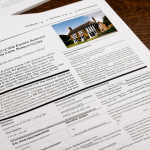Key differences between leasehold and freehold ownership
Understanding the distinction between leasehold vs freehold is vital for anyone exploring property ownership types UK. In simple terms, freehold means outright ownership of both the property and the land it stands on, without time limits. Meanwhile, leasehold grants the right to use the property for a fixed period, often ranging from decades to centuries, but ownership of the land remains with the freeholder.
This difference shapes the ownership structure and duration significantly. A freeholder enjoys indefinite control, while leaseholders must respect the lease length, after which ownership reverts back to the freeholder unless extended.
Also to discover : Tapping into wealth: a guide for uk property investors to maximize government incentives and grants
Control and responsibilities further set them apart. Freehold owners usually manage and maintain their property independently. Leaseholders, however, may face obligations like paying ground rent or service charges to the freeholder, affecting long-term costs and decision-making power. Therefore, fully grasping these property definitions clarifies how your rights and duties vary with each type, influencing your property investment in the UK.
Legal and financial implications for property buyers
Understanding the legal implications property UK is crucial when deciding between leasehold vs freehold ownership. Leaseholders have specific obligations tied to leasehold law changes, such as adherence to lease terms and potential restrictions on property alterations. Freeholders enjoy greater autonomy but bear full responsibility for property upkeep and compliance with local regulations.
Have you seen this : Navigating the uk mortgage labyrinth: your comprehensive guide to achieving success
Financial considerations property buyers face vary considerably. Leaseholders often pay ground rent and service charges to the freeholder, which can increase over time, adding to overall costs. In contrast, freehold owners usually manage maintenance expenses independently, which can be more predictable but potentially costly upfront.
Recent leasehold law changes aim to limit escalating ground rents and simplify lease extensions. These reforms significantly affect the long-term financial burden and rights of leaseholders, making it essential to stay up-to-date with evolving legislation. Buyers should thoroughly assess these factors as they impact total ownership costs and legal responsibilities in the UK property market. Understanding these elements ensures informed decisions aligning with one’s financial and legal comfort zones.
Pros and cons of leasehold and freehold properties
Choosing between leasehold vs freehold involves weighing clear pros and cons. The advantages of freehold include complete control and long-term security. Freeholders manage their property independently, free from ground rent or service charges, and face fewer restrictions on alterations. This autonomy appeals to buyers seeking stability.
On the other hand, leasehold ownership offers benefits in specific contexts. It often applies to flats or apartments, making leaseholders part of a managed building with shared maintenance responsibilities. This can reduce individual upkeep hassle. Leasehold might also be more affordable initially, appealing to first-time buyers.
However, the disadvantages of leasehold include limited control, lease duration constraints, and potential escalating costs like ground rent and service charges. Leaseholders must obtain permissions for modifications, and if the lease shortens, property value may fall, affecting resale. Awareness of leasehold law changes is crucial to navigate these risks.
Ultimately, understanding the pros and cons leasehold reveals when freehold’s independence suits those valuing permanence, while leasehold may fit buyers prioritising management convenience or lower entry costs in the UK property market.
Pros and cons of leasehold and freehold properties
When weighing pros and cons leasehold ownership, one must consider its lower initial purchase price. Leasehold properties, particularly flats, often appeal to buyers constrained by budget. However, the disadvantages leasehold include ongoing obligations like ground rent, service charges, and diminishing control over the property as the lease shortens. Uncertainty about future lease extensions and possible restrictions on alterations can also impact long-term value and use.
On the other hand, the advantages freehold are clear: outright ownership confers full autonomy over the property and land. Freeholders avoid ground rent and have the liberty to manage maintenance matters directly. Yet, this comes with potentially higher upfront costs and sole responsibility for all repairs.
Situationally, leasehold might be preferable for buyers seeking entry into areas where freeholds are scarce or expensive, or for lease terms exceeding 80 years, which reduces risks of lease degradation. Understanding these nuances helps guide buyers toward a choice aligning with their needs, budget, and long-term plans regarding property ownership types UK.
Key differences between leasehold and freehold ownership
In the context of property ownership types UK, understanding the fundamental property definitions of leasehold and freehold is essential. Leasehold ownership grants you the right to occupy a property for a fixed term, typically several decades, but the land remains under the freeholder’s control. This temporal nature of leasehold means ownership eventually expires unless the lease is extended.
Conversely, freehold means owning the property and the land outright, with no time limits. This indefinite ownership provides greater control and autonomy. The ownership structure under leasehold confines you to lease terms that dictate rights and responsibilities. Freehold owners bear full responsibility for upkeep and property decisions, whereas leaseholders often have restrictions and must comply with the freeholder’s rules.
Control differences are significant. Leaseholders might need permission for alterations, pay ground rent, and share maintenance costs, whereas freeholders manage these independently. Knowing these contrasts in leasehold vs freehold ownership helps clarify your rights, obligations, and the longevity of your property investment in the UK market.
Key differences between leasehold and freehold ownership
Understanding leasehold vs freehold hinges on their distinct property ownership types UK. Freehold means full ownership of both the property and its land indefinitely. Conversely, leasehold grants ownership rights for a specified period, after which control reverts to the freeholder unless extended.
Ownership structure in leasehold involves a contractual lease, often lasting decades or centuries. This limits the duration of possession and influences property value over time. Freehold owners, by contrast, maintain perpetual ownership without expiry.
Control and responsibilities differ significantly. Freeholders have autonomy over maintenance and alterations, bearing all costs and decisions themselves. Leaseholders, however, must comply with lease terms, which may include obtaining permissions and paying ground rent or service charges. These obligations can restrict how a leasehold property is used and maintained.
Recognising these property definitions equips buyers to assess what fits their lifestyle and investment goals—whether they prefer freehold’s permanence or leasehold’s managed convenience within the UK market.
Key differences between leasehold and freehold ownership
Understanding leasehold vs freehold begins with clear property definitions in the UK market. Leasehold grants the right to occupy a property for a fixed term—often 99 or 125 years—while ownership of the land stays with the freeholder. Once a lease expires, unless extended, possession reverts to the freeholder. This temporality is central to leasehold’s structure, affecting both value and use.
Freehold ownership differs fundamentally. It means owning both the property and the land indefinitely, giving the owner complete control without time constraints. This ownership type typically involves sole responsibility for maintenance and decision-making.
The ownership structure directly influences control and responsibilities. Leaseholders often face restrictions, such as needing permission for alterations and paying ground rent or service charges. Freeholders have broad autonomy but must manage upkeep and compliance independently.
These contrasts in property ownership types UK highlight how leasehold versus freehold status shapes rights, financial duties, and long-term security in property investment decisions. Understanding these distinctions enables buyers to match ownership to their goals and commitment level.
Key differences between leasehold and freehold ownership
Understanding leasehold vs freehold starts with clear property definitions. In the UK, freehold means owning both the property and the land indefinitely, giving full autonomy and no expiry date on ownership. This contrasts with leasehold, which grants rights to the property for a fixed term—commonly between several decades to over a century—while the land remains under the freeholder’s control.
The ownership structure under leasehold involves a contractual agreement defining the duration and specific conditions. When the lease ends, ownership reverts to the freeholder unless an extension or purchase of the freehold occurs. Freehold owners enjoy permanent possession, often leading to higher market value due to security of tenure.
Control and responsibilities differ significantly between these property ownership types UK. Freeholders manage maintenance, alterations, and all associated costs independently. Leaseholders must follow lease conditions, which often include paying ground rent and service charges, and require permission for alterations. This limits tenant autonomy but can reduce some individual maintenance burdens.
Knowing these distinctions in leasehold vs freehold helps prospective buyers understand their rights, duties, and long-term implications in the UK property market.






